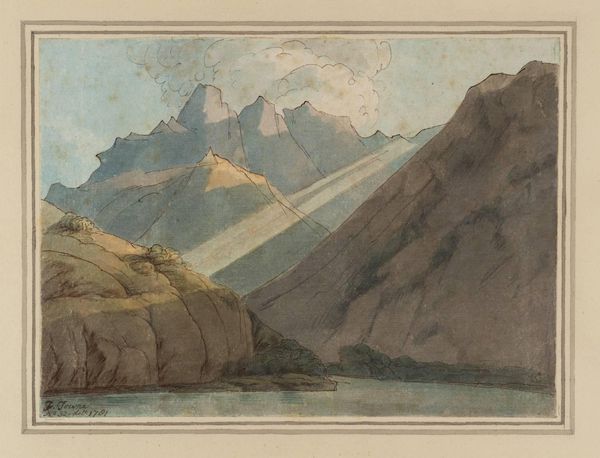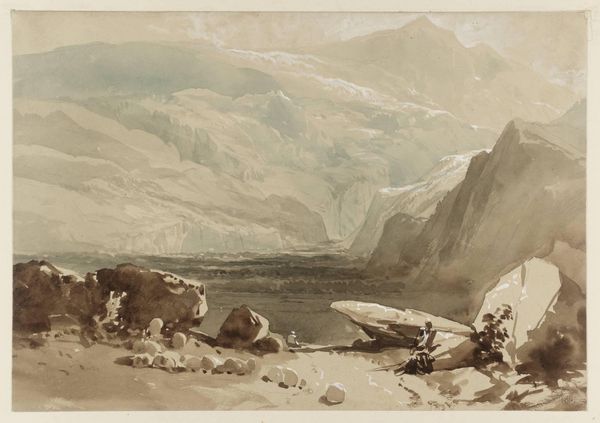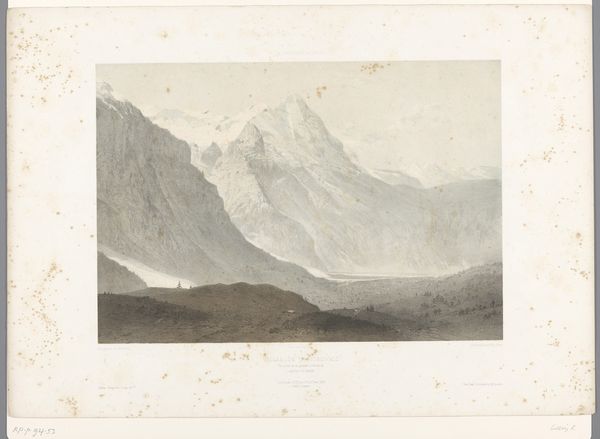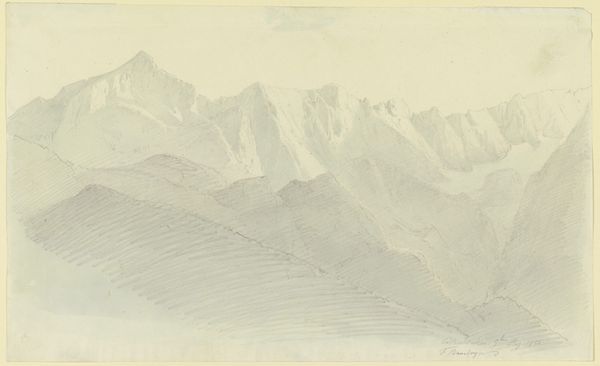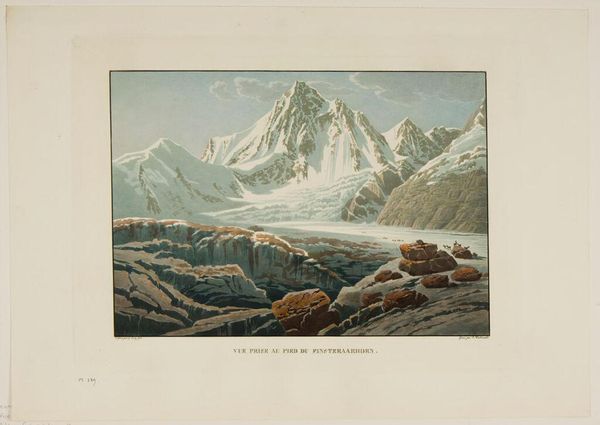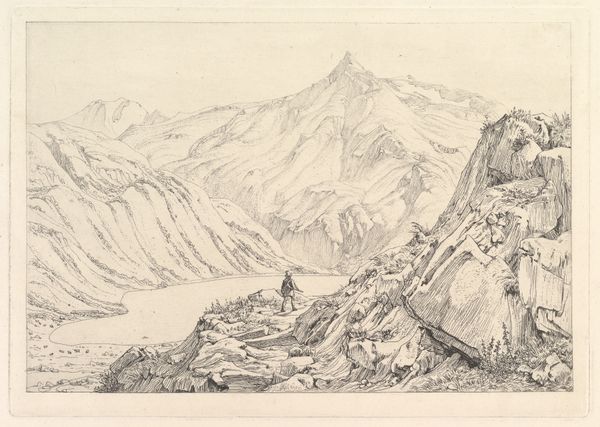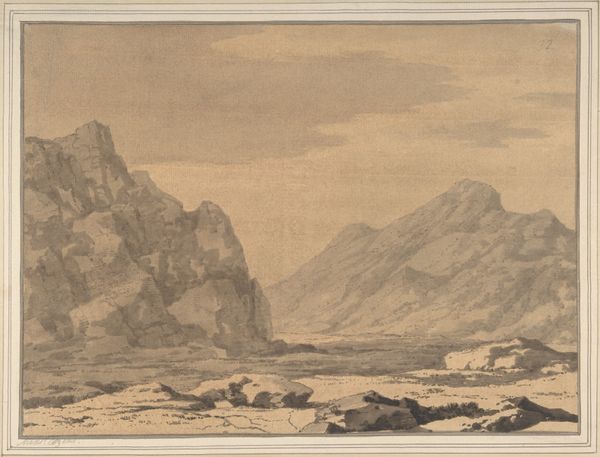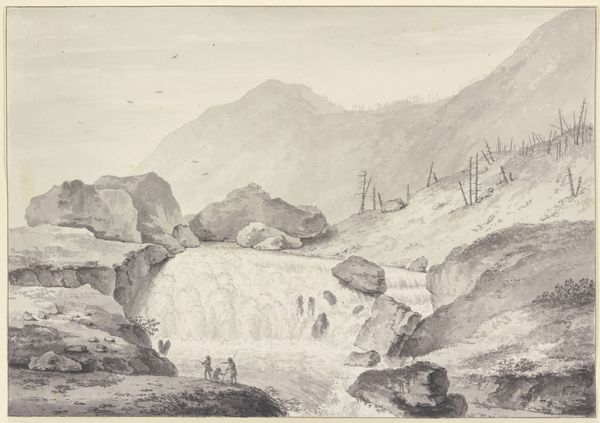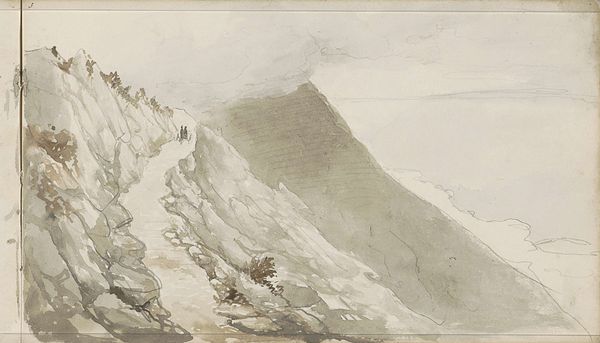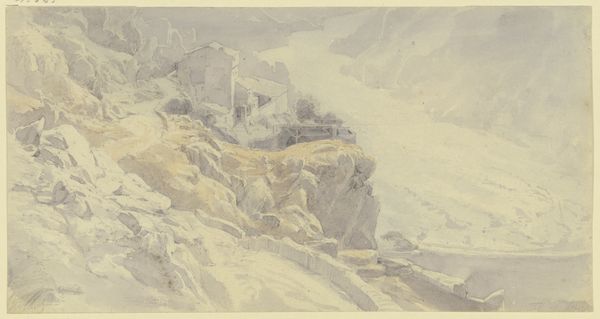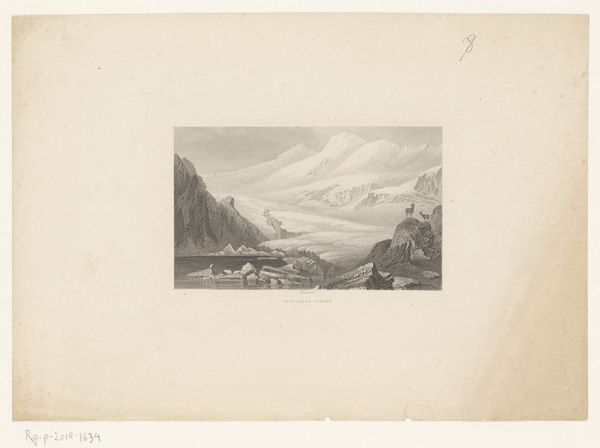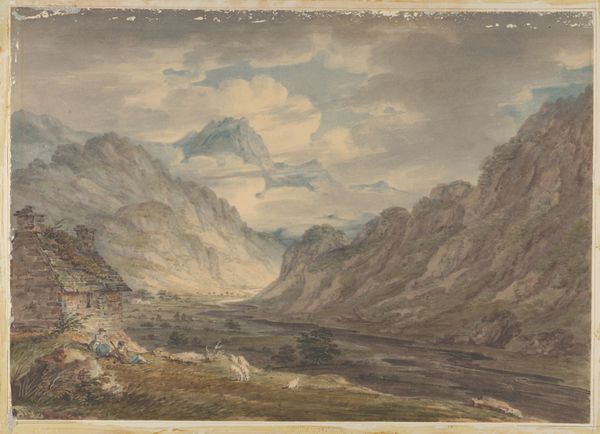
Dimensions: height 260 mm, width 390 mm
Copyright: Rijks Museum: Open Domain
Curator: So here we have a piece by Karoly Lajos Libay, it's titled "Pasterze Glacier near Heiligenblut." The work’s exact date is a bit unclear, but it’s estimated to be from sometime between 1824 and 1888. It seems to employ a mixed medium technique using watercolor and drawing. Editor: Brrr! I immediately feel cold just looking at it. The muted colors really contribute to this glacial, austere atmosphere. It’s like a vast, silent world rendered in delicate shades of grey and white. Curator: Absolutely. If we examine the drawing more closely, we can see how the medium informs the message, how it speaks to themes of sublime nature, of man's small place in such a vast geography, of production. It also makes me think about accessibility to certain landscapes in that era. Editor: I am particularly drawn to the almost theatrical presentation of the glacier, like a frozen wave forever suspended in motion. And isn’t it fascinating how the small figure in the foreground highlights our human connection—or perhaps disconnect—with this immense, natural force? A tiny player on a gigantic stage, almost consumed by it, that also serves as an aesthetic bridge of the artist's creation for us? Curator: Yes, the figure is an intentional device to measure the immense scale of the natural environment. What's even more poignant, though, are the labor implications. I would wager that most people could not reach such sites at this time; but that Libay certainly could through considerable resources and help. Editor: That's a sobering perspective. The romance of the scene is certainly tempered by the social and economic realities surrounding its creation and subsequent consumption. It leaves me thinking about what it means to produce landscapes during a specific era. Curator: Exactly. It also begs questions: Who had the privilege of appreciating such views, of commissioning or purchasing artworks depicting them, and whose labor supported such activities? Editor: Definitely some complex ideas frozen right into the scene, it turns out! Curator: Well, as an object for reflection on more than beauty, the landscape delivers!
Comments
No comments
Be the first to comment and join the conversation on the ultimate creative platform.
